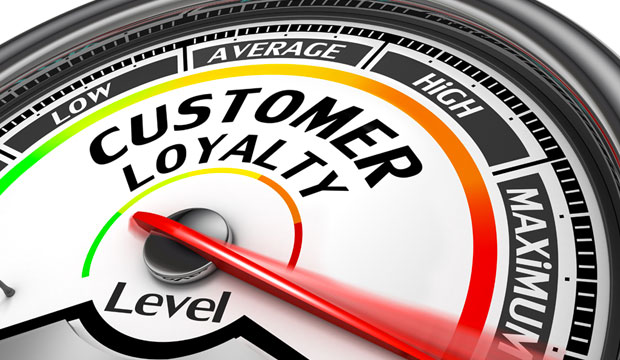Given today’s data and technological advancements, coupled with an abundance of choices for consumers, the importance of loyalty has never been greater. The marketing landscape has shifted as power has moved from sellers to buyers, and businesses have realized a heightened need for customer loyalty.
Market fragmentation has dramatically increased competition, magnifying the need for loyalty. Traditionally, loyalty has been achieved through a series of rational benefits delivered to members in exchange for their business.
Although rational benefits are still critical, emotional benefits are needed as well. Loyalty marketing should focus on retention, since this method focuses on and rewards your best customers.
Due to seemingly endless options available to consumers, and their access to technology tools, retention is crucial in The Age of the Customer.
1. Listen to Your Customers
This seems simple enough, but it stands as the most important strategic exercise that loyalty marketers can employ. Effective listening allows brand officials to identify customers’ likes, dislikes and pain points.
Part of this process involves finding out what would make their lives better or easier.
While consumers are cost-conscious, they ultimately decide to buy products from brands based on various factors. These can include style or aesthetics, brand values and mission, recommendations from family and friends, and endorsements by celebrities and influencers associated with a brand.
When you have customers who have so much love and passion for your brand that they are willing to pay to receive more value, they have identified themselves as customers you want to understand better.
An absolute imperative in creating strong customer relationships is understanding the why behind those transactions.
What triggered their most recent purchases? Why have your customers chosen your brand to represent them? What is it about your brand that they love above and beyond your competitors? Most importantly, how does your brand make them feel?
There is no better example of a brand listening to its customers than Amazon. Prime, Amazon’s very successful premium loyalty program, eclipsed 100 million global members earlier this year.
Since 2005, when Prime launched, Amazon officials have kept the program fresh and attractive by adding appealing and relevant benefits over the years. Included are unlimited video streaming, limited music streaming, unlimited photo storage, one free e-book per month, free audio books and free games.
2. Show Them You Know Them
Once you truly listen to and hear your customers, you provide them with attractive benefits.
Personalization is a big driver of loyalty. Brands yearn for one-to-one relationships with customers that heighten the personalization impact.
Brands have to deepen and expand their digital relationships by using a variety of customer experiences and program tactics to keep them fresh.
When a brand understands why a consumer made a purchase, you know what emotions are motivating your most loyal customers to shop your brand.
If your brand caters to consumers with busy lifestyles, you may consider a dedicated customer service line or concierge benefit that provides expedited or specialized service. Customers are willing to offer personal information in exchange for some type of benefit.
Giving your customers confidence that you’ll quickly resolve any issues they experience makes them feel special. However, it also appeals to the emotion of stress that results from a pile-on of time-consuming and inconvenient tasks.
Mass marketing can be a turnoff to many consumers. Traditional promotions have trained consumers to wait for discounts, and they’re going to go wherever the discount is. That’s not loyalty. That’s why a premium loyalty program that provides members with incredible benefits available anytime they desire is so appealing.
When you give your customers benefits they can use anytime, they’ll engage with your brand more often. The key is making sure the program and benefits really connect with your customers.
Consumers want brands to know them and to feel valued. When brands achieve this, it is a surefire way to boost customer loyalty.
3. Differentiate Your Offerings
Given the unlimited choices that consumers have, with a little effort they always can find the best product at the lowest price.
This reality translates to retailers no longer being able to compete on price, and that’s where differentiation enters the picture.
Creating emotional connections that lead to memorable experiences is the ultimate goal for any brand.
Consider how TOMS weaves social impact directly into its business model. Through its “One for One” program, TOMS provides one pair of shoes to a child in need for every pair that is purchased by a customer.
When consumers can identify with a brand because of a social message that supports a great cause, it creates a deep and enduring bond. Consumers will engage more and commit to a brand because of an emotional connection.
Engagement is as important a loyalty metric as any. Another vital metric is trust.
Differentiation leads to increased engagement, heightened trust and deeper customer loyalty.
Officials at TOMS have a deep understanding of their customers, which allows them to develop impactful strategies around engagement.
4. Make Them Feel Special
Everyone wants to feel special. In the retail world, some brands deliver on this aspiration better than others.
Premium loyalty programs that have an abundance of exclusive benefits are extremely attractive to customers. Customers love discounts, but they want to feel like they’re getting special treatment that no one else is getting.
Retailers that think differently and challenge the legacy way of thinking are the ones that are earning the loyalty of their customers now and in the future.
Amazon, Restoration Hardware and Sephora are building loyal customer bases during a time that’s never been tougher for retailers.
Amazon Prime is the best and biggest example of this type of program, which targets your most loyal customers.
Prime keeps its highly successful program fresh because it doesn’t rest on its laurels. Instead, it continues to scale new heights by listening to its customers and providing relevant and value-based benefits they desire.
Sephora listens to its customers and aligns those desires with its Beauty Insider loyalty program, which offers a tiered benefit system to its 10 million members based on spend.
While basing rewards on transactions is typical of more traditional loyalty programs, the experiential benefits that come with it are different from those of other retailers. For example, members get access to experiences like makeovers, a private hotline, and invites to exclusive events depending on where they fall on the purchase spectrum.
Sephora’s audience is largely mobile-first, so offering a platform like this to members in the manner that they want it makes integration into their lives seamless.
One of its most interesting benefits is its members-only Beauty Insider Community, which is a social platform that allows members to create a profile, upload photos, and chat about products and fashion.
Beauty Insider launched in 2007 as a way of thanking clients with special products, exclusive events, and an all-access pass to personalized beauty. In 2009, Sephora launched V.I.B. (Very Important Beauty Insider), a premium level for Beauty Insiders giving clients access to exclusive gifts, event invitations, and early access to select products.
Sephora followed that up in 2013 when it launched V.I.B. Rouge status. All of these moves were a way for Sephora officials to reimagine their loyalty program as a key strategy.
That VIP-type status is very important to Sephora customers, and they take advantage of phenomenal benefits through the loyalty program.
5. Enhance Your Free Loyalty Program With a Premium Tier
A free loyalty program is a good way to attract and build as many members as possible.
However, if you want magnified engagement and spend from your best customers, a one-size-fits-all free loyalty program may not do the trick.
That’s where premium loyalty programs come in. By charging a membership fee, you’ll get your best and most loyal customers involved, and you’ll be able to offer them the best and most engaging experiences from your brand.
Traditional programs require members to spend over time for rewards that come later. Premium loyalty programs work the opposite way.
In a premium loyalty program, members pay a recurring fee to stay in the program in exchange for valuable brand- and product-specific benefits that they can use anytime. This means that members can engage with the program 24 hours a day, 365 days a year.
Free and premium loyalty programs complement one another. For brands, overlaying a paid tier program is a great strategy. It provides them with an opportunity for a test and learn approach.
Marketers with premium loyalty programs subscribe to the 80/20 rule — 80 percent of a brand’s sales come from 20 percent of its customers.
Target your best and most loyal 20 percent of customers with a premium (or paid) loyalty program. These are the customers who most likely will raise their hands to participate in a premium loyalty program that offers expanded and immediate benefits for an annual fee.
6. Make Your Loyalty Program About Your Customers
There is no substitute for listening to your customers, identifying their pain points, and addressing them.
You can address their pain points by showing your customers that you know them.
Differentiation is the key to standing out from your competitors. Customers want to align with a brand that instills emotion in them.
Always make your customers feel special. If you don’t, you risk losing them at any time.
Enhancing your free loyalty program with a premium tier covers your customer bases and makes your best customers much more valuable.
Premium loyalty can work for any brand, but targets your best and most engaged customers. As a result, those customers become exponentially more valuable based on spend and spreading the word about your brand.
Successful marketers create engaging loyalty programs that are seamlessly aligned with the brand’s character and message. Catering to your most valuable and loyal customers is the best way to earn sustainable brand advocacy.














































